Ma. Theresa H. Velasco
The second-to-the-last chapter should enable readers to:
1. Explain key concepts and principles in managing and implementing communication programs in NRMA;
2. Describe the management improvement process; and
3. Identify problems commonly encountered in managing and implementing communication programs in NRMA.
MANAGING COMMUNICATION IN NRMA THROUGH PARTNERSHIPS: THE CAMBODIA COMMUNICATION TEAM
A Communication Team (CT) was set up early on in the implementation of the FAO - supported Information and Communication for Natural Resources Management Project (TCP/CMB/0165).
The CT was composed of communication and extension personnel from two ministries, which had the biggest stake in NRMA in Cambodia - Ministry of Agriculture, Forestry, and Fisheries (MAFF) and Ministry of Environment (MoE).
Membership to the CT was drawn from the central, provincial, and district offices of the two ministries.
The 17-member CT functioned under the guidance of the Project Coordinating Unit (PCU), a three-member group represented by the director of MAFF's Department of Agricultural Extension, the director of MoE's Department of Extension and Communication, the Project Manager and FAO.
The technical cooperation project focused on institutional capability building of communication and extension personnel from MAFF and MOE.
A series of training workshops on various aspects of participatory development communication planning and implementation was carried out at various times during the project. All activities undertaken throughout the technical cooperation were anchored on partnership with and ownership by the CT and PCU of project plans, activities, and outputs. Selection of PCU and CT members who would play key roles was based on consultation with the team and on who could deliver, as well as possess commitment and capability to sustain project initiatives.
Synergy of efforts was also emphasized at every occasion possible. That is, the whole or the total effect is greater than the sum of two or more effects taken independently. Teamwork is crucial to the success of the technical cooperation. Bringing the two ministries to work together on matters of national concern, such as natural resources management, is a singular achievement.
Moreover, the multi-level management structure was envisioned to link the various stakeholders - from the central-level ministry people down to the provincial- and district level-staff, and the villagers themselves and vice-versa.
It was critical for all stakeholders and participants in the communication program - from top to bottom, from bottom to top - to understand the program itself and what each one could do towards its successful implementation. As many development agencies have experienced, no communication program would be successful without managers or leaders and followers or workers who are well-versed with every aspect of the program.
A thorough understanding of the key principles of management and implementation is an important integrative step in the process. This was emphasized to the Communication Team in the series of training-workshops on information and communication that the members attended in a span of two years.
|
|
MANAGEMENT DEFINED
Simply defined, management is the ability to start, change, and stop: start doing desirable activities, change directions when necessary, and stop doing unproductive chores (Lozare 1997). No plan is made in heaven, so to speak.
While it is highly desirable for a communication program to have every step carefully mapped out according to research data, flexibility to adjust to changing situations becomes a must at certain points in the program cycle.
A communication manager would do well to remember three important tasks of a manager:
Management of people;
Management of tasks; and
Management of organizational climate.
Management of people is often looked at as the most difficult of the three tasks because it involves creating a productive climate through communication, problem-solving, and decision-making.
All these require people skills or the ability to deal with various types of workers in an organization and types of clientele or stakeholders as well. Management of tasks, on the other hand, entails careful planning, organizing, and controlling people and tasks, to a certain extent.
However, many management experts consider management of organizational climate as the heaviest among the three tasks in the sense that it involves balancing the other two tasks to achieve productivity.
Organizational climate means how it feels to work in an organization or to work with fellow team members. 1) When one feels that his movements in an organization are so restricted and that he does not get enough support from management, he is said to be working in a control environment. This is the by-the-books kind of set up where every action is governed by a set of rules, hence one that could easily stifle creativity and ingenuity. 2) The quota-driven climate is referred to as the rat-race climate, named after the animal that scurries quickly from one place to another as if racing against time to get something done. 3) The excellence climate appears to be ideal because who does not want to stamp one's work with the seal of excellence? A note of caution about this organizational climate, though, is the need to get goals, strategies, and activities all rooted in reality lest the program suffer from unnecessarily aiming too high. 4) The TEAM climate is hailed as possibly the best organizational climate because it fosters unity, cooperation, and oneness of purpose. JHU/CCP, by the way, has supplied a meaning for each of the letters of the word TEAM: Together Everyone Achieves More. Teamwork indeed divides efforts among the stakeholders but definitely multiplies results.
THE FIVE-STEP MANAGEMENT IMPROVEMENT PROCESS
Management is a dynamic activity, the success of which largely depends how the program team looks upon the organization's directions, tasks, and its people's appreciation of such program components, as well as their relationship with one another.
The following five-step management improvement process (JHU/CCP 1997) is as good a guide as any in managing a communication program.
Improve organizational climate.
Set clear vision and plans.
Strengthen commitment to excellence.
Build capacity through systems improvement and development.
Empower people through good leadership, training and retraining, and job aids or tools.
Improving organizational climate appears to be a communication manager's primary task. When people feel good working in an organization for worthy development-oriented goals, management of people and management of tasks become easier.
A number of measures would help a manager foster a good organizational climate. One is the adoption of the participatory technique of management.
Managers and workers alike do feel good when they take part in the organization's day-to-day goings-on. Involvement heightens stakeholders' sense of belonging and sense of ownership of the program.
Through participatory undertakings, it also becomes possible for managers and workers to jointly develop a multi-stage plan of action that makes it possible for the organization to move systematically towards the achievement of its objectives.
|
|
Two, fostering good organizational climate requires confident but careful execution, progress monitoring, and making adjustments. People working in an organization feel competent to carry out tasks when they know that they have equally competent leaders and vice versa.
Three, involving team members in monitoring the progress of activities allows not only for reality-checks but also for making the necessary adjustments in operations and consequently in what everyone has to do in relation to the adjustment made.
And four, it is good for a team to "celebrate success", to recognize one another's contributions to the successful implementation of a program.
Setting clear vision and plans is like planning to walk in the dark with all sorts of lighting paraphernalia in place. You know where you are going; you know how to get there; you are equipped with all the tools needed to get you where you want to be.
Many communication programs suffer from the absence of a clear vision and a systematic plan on how to achieve the vision. The term program planners apply to the day-to-day coping kind of management is muddling through, which is like making a film without a script, so the director muddles through the exigencies of the day.
Disastrous results arising from such lack of vision and plans can be prevented by making everyone in the organization cognizant of what the communication organization wants to achieve and how it can do so. It is not enough that managers and planners know the communication program and plans by heart.
What is important is for everyone - particularly those in the lower ranks who are constantly in touch with the stakeholders of the program - to be part of the larger plan of action.
Strengthening commitment to excellence sounds like a daunting task. Yet aiming for the best that each one could do and contribute towards the success of a communication program also sounds like a most logical undertaking. The phrase Quality Costs Less (JHU/CCP 1997) exemplifies the pursuit of excellence.
Oftentimes, program planners and implementers are tempted to resort to the least expensive strategies because of budget constraints.
As a result, cost-cutting is the primary consideration in such important aspects as hiring of personnel and development and production of communication materials. This in turn leads to mediocre performance for the entire communication team.
To strengthen excellence or quality of program planning and implementation, communication managers need to:
Learn from those who are doing the work. Paper-and-pencil planning is not good enough when we are talking about people's lives and our own desire to help the people achieve this through communication.
Encourage initiative and resourcefulness. Communication managers should realize that they need to build quality in, not just single out bad quality. Quality control weeds out products, for example, that fall below standard but does not improve quality.
Demonstrate management commitment by constantly seeking excellence and quality in strategies, procedure, and services, not just in the product or output.
Consistently seek quality solutions, not the cheapest one.
Improve by one per cent continuously. The team with a vision to fulfill thinks big but starts small and acts decisively and consistently towards the goal.
Building capacity through systems improvement and development is an often-overlooked aspect of the management improvement process.
This is because of the assumption that a large percentage of errors in program implementation stem from the people who carry out the tasks.
On the contrary, Dr. E. Demming, a management specialist, estimates that only 15 per cent of errors are worker-related while a huge 85 per cent are systems-related. Another management specialist, Peter M. Senge in his book.
The Fifth Discipline (1994), supports systems thinking as the foundation of how learning organizations view the world. "...Systems thinking is the discipline for seeing wholes, a framework for seeing interrelationships rather than things, for seeing patterns of change rather than static 'snapshots' of isolated parts of the system...Systems thinking is a shift of mind ...from seeing people as helpless reactors to seeing them as active participants in shaping their reality, from reacting to the present to creating the future."
Empowering people completes the five-step management improvement process. This can be done through good leadership, training and retraining, and provision of job aids or tools.
Good leadership springs from a leader's realization that he needs to overcome his own fear that empowering people will diminish his own authority. In the process, he also sees to it that program workers and the stakeholders in general work together not out of fear but out of a genuine dedication to the achievement of program goals.
It is also good for a leader to provide people with all the "tools" they will need for successful implementation, specifically through training and retraining.
Examples of such tools are interpersonal communication skills and skills in development, pretesting, and production of communication materials.
All told, to empower people involves paving the way for their participation in the communication, problem-solving, and decision-making processes.
The PRCA exercise that the Communication Team went through was an eye-opener in terms of seeing the interrelated factors underlying the situation in the two villages.
The perceived problems were not isolated problems that could be solved simply by producing posters and video materials about livelihood and conservation of natural resources.
Rather, these were problems borne of many factors that only active consultation with the villagers could help address. The people's participation in such matters that concern them should be engendered.
COMMON MANAGEMENT-RELATED PROBLEMS
A management problem is a deviation from plans. And it is a fact that the best laid out plans could go awry.
Some of the most commonly encountered problems in planning and implementing a communication program are graphically presented below.

1. Deviation from main goal
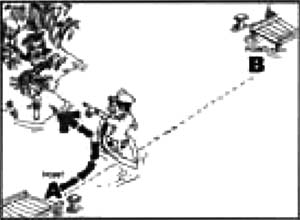
2. Distractions
Along the way towards achieving the vision, there are many factors that could prevent planners and implementers from getting there.
Two of these are deviations from the main goal and distractions.
Deviations often arise from stakeholders' preoccupation with some intermediate goals that may or may not contribute directly to the attainment of program objectives.
Development agencies often find themselves attending to a thousand-and-one "small" tasks before they can carry out their development programs at the village level. For instance, they have to deal with the bureaucracy, which is both an enabling mechanism and a formidable stumbling block in program implementation.
While it is so important to secure the commitment of local government officials, such an undertaking can sometimes take up so much unnecessary time that causes considerable delay. There are documented cases where the chief's blessings come only a few months before the project ends.
Distractions, on the other hand, may range from the very ordinary occurrences, like workers' preoccupation with non-productive leisurely activities, to the profound concerns, like important political developments in a country or natural calamities.
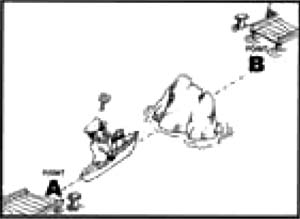
3. Fixed obstacles

4. Changing obstacles
Managers inevitably encounter obstacles, both fixed and moving, during program implementation. Examples of fixed obstacles are customs and traditions that are hard to change because people have practiced them since time immemorial.
For example it is difficult to ask people not to cut trees in the inundated forests because their fathers and their fathers' fathers before them have done exactly the same.
Moving obstacles are events that bring about current changes in the way things are usually done.
Elections, for instance, bring with them a change of officials, with the concomitant change in policies, priorities, and programs.
Every administration is bound to think of a way by which it could be different from the previous one because it wants to leave its mark or its own brand of development. Hence the expected changes every time an election takes place.
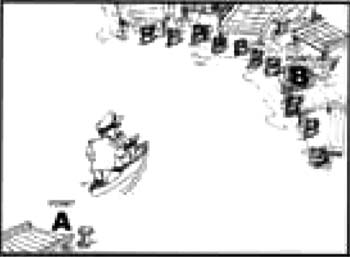
5. Too many captains
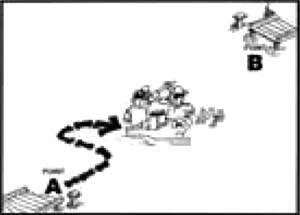
6. Too many goals
Focus is critical in management. While it is desirable to aim for high accomplishments, it may be disastrous to aim for far too much more than what could be accomplished given all the necessary inputs of time, money, personnel, and other resources.
Spreading resources too thinly is counter-productive. There are instances when the goals may be clearly in focus, yet programs suffer miserably because there are too many leaders at the helm. There's a saying in English, "Too many cooks spoil the broth."
When there are many people who want to become all leaders, loyalties are divided and bickerings often erupt, delaying further a program that is already fragmented by internal misunderstandings between and among its many leaders.

7. Running out of resources in the middle of implementation
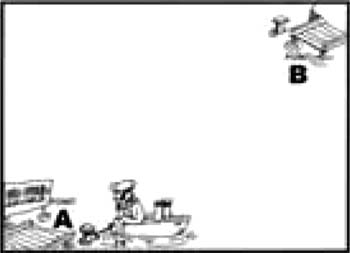
8. Lack of resources at the start
A good manager takes stock of every resource that his team will need for the duration of the program.
Problems arise when a program runs out of resources in the middle of implementation for whatever reason - miscalculation of needs, misappropriation of funds, corruption, lack of foresight in spending, failure to make allowances for contingencies or unforeseen events, economic crises that lead to currency devaluation that in turn considerably shrinks the original budget, and many other concerns.
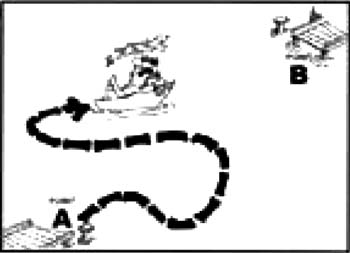
9. Lack of plan
Probably the worst sin the manager of a communication program could commit is not to have any plan at all. Some management scholars refer to this set up as the laissez-faire philosophy or practice characterized by a deliberate lack of direction or planning. Managers who go through their day-today activities without any definite plan are said to be muddling through, the literal meaning of which is "to achieve a degree of success without a decisive plan."
One may ask at this point: is it only the success of the communication program that matters? In development work, many will disagree with the Machiavellian principle that the end justifies the means. The process of achieving the vision and the specific objectives of a developmental communication program are equally important - from the initial consultation with the people regarding what they think is best for them, to the strategic planning with, not for, the people, to the participatory development, pretesting, and production of communication materials, to the participatory monitoring and evaluation. Inherent in a genuine development-oriented program are initiatives that would develop capability building, participation, good leadership and effective management, and teamwork. Without a concrete plan, none of these could ever be possible.
The ideal path is that of a straight line between two points. There is a solid vision the communication team aims to fulfill, with an accompanying concrete plan that provides the guideposts for carrying out specific activities. The obstacles, both fixed and moving, have been ironed out due largely to a good analysis of the problem, the stakeholders, the program, and the situation in general. The entire strategy is in place.
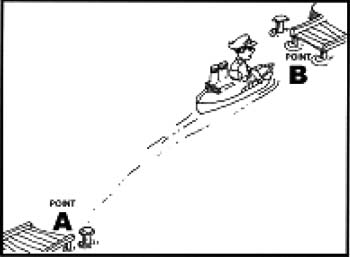
SUMMARY
The successful management and implementation of communication programs and NRMA requires everyone involved from top to bottom to have a clear understanding of the project's mandates and operations.
On top of this, a clear and common grasp of management concepts and principles among the various project stakeholders facilitates smooth implementation of the project.
In essence, good management means being able to start desirable activities, change direction when needed, and stop doing unproductive chores. It has three dimensions: management of people, of tasks, and of organizational climate or how it feels to work in an organization.
The best organizational climate is best described by the acronym TEAM, which stands for "Together Everyone Achieves More" and signifying productive teamwork.
In improving the management of a communication program, the following five-step process provides a useful guide:
1) improve organizational climate;
2) set clear visions and plans;
3) strengthen commitment to excellence;
4) build capacity through systems improvement and development; and
5) empower people through good leadership, training and retraining, and job aids or tools.
A management problem is a deviation from plans, possibly brought about by
1) deviation from the main goal;
2) distractions;
3) fixed obstacles;
4) changing obstacles;
5) too many captains;
6) too many goals;
7) running out of resources in the middle of implementation;
8) lack of resources at the start; and
9) lack of a plan.
REFERENCES
Anyaegbunam, C., P.Mefalopulos, and T. MoEtsabi. 1998. Participatory Rural Communication Appraisal: Starting with the People. Harare: SADC Centre of Communication for Development and Rome: Food and Agriculture Organisation of the United Nations.
Bessette, Guy. 2003. Isang Bagsak: A Capacity Building and Networking Program in Participatory Development Communication. Canada: International Development Research Centre.
Kouzes, James M. and Barry Z. Posner. 1995. The Leadership Challenge. San Francisco, California: Jossey-Bass, Inc.
Piotrow, P.T., D.L. Kincaid, JG Rimon, and W. Rinehart. 1997. Health Communication: Lessons from Family Planning abd Reproductive Health. Johns Hopkins School of Public Health, Center for Communication Programs: Praeger Publishers.
Senge, Peter M. 1994. The Fifth Discipline. New York: Currency Doubleday.